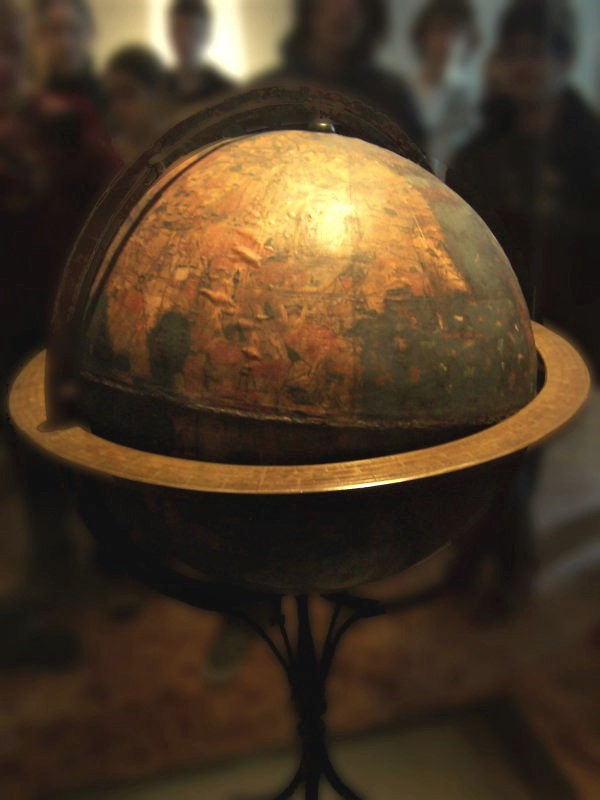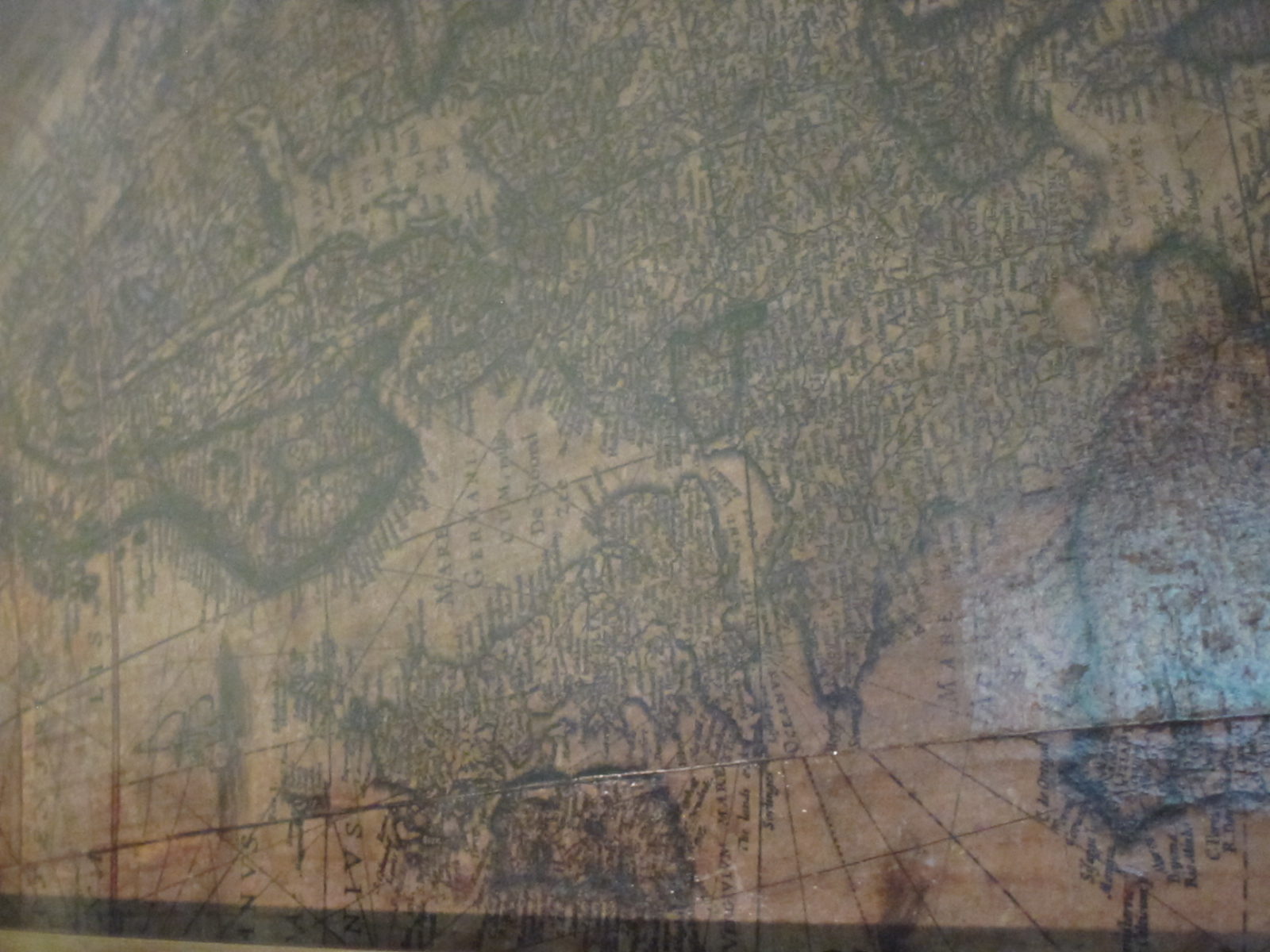Project Blog
Globes and Celestial Spheres
Following on our post about the medieval awareness of the round earth, this week we look at globes. Broadly speaking, there are two types of globes one can encounter in a museum, terrestrial (depicting the Earth), and celestial (depicting the sky, the stars, and constellations). It has been famously said that there are no terrestrial globes surviving from medieval Europe, and indeed it appears that the earliest (surviving) globe made in Europe dates from the end of the fifteenth century. The globe was made ca. 1492 by Martin Behaim (1459-1507) and is now kept in the collections of the Germanisches Nationalmuseum, Nuremberg. The museum’s online Object Catalogue contains a detailed description of the globe. The globe follows the medieval European mappaemundi tradition in its synchronic representation of geography and history. It depicts, for instance Noah’s Arc. As noted in the museum’s catalogue description, the depiction of the Garden of Eden, conventional for mappaemundi, is missing from the Globe. This can be interpreted as a reflection of the updated view of the world (it shows, for instance, Japan in the Far East, unknown to medieval geographers) and the slightly different role of the geographical depiction provided by the globe. Oxford University’s digital teaching platform Cabinet provides useful images and links to further information on the Behaim globe.

Martin Behaim’s Globe (1492). Photo: Alexander Franke, 31 March 2006 Source: Wikimedia https://commons.wikimedia.org/wiki/File:Behaims_Erdapfel.jpg (CC BY-SA 2.0 DE). By clicking on the image you will be redirected to the object page on the Oxford University’s digital teaching platform Cabinet.
The making of celestial globes has a longer history in Europe, and some appear to have been constructed in Ancient Greece. A short history of celestial globe construction is presented in this video by the Museo Galileo. In a recent British Museum Curators’ Corner video, William Greenwood introduced a fascinating thirteenth-century example of a celestial sphere, which shows the constellations not as we would see them from the Earth, but as seen from the outside, as it were, if one were looking down at the Earth.
Post by Natalia Petrovskaia

